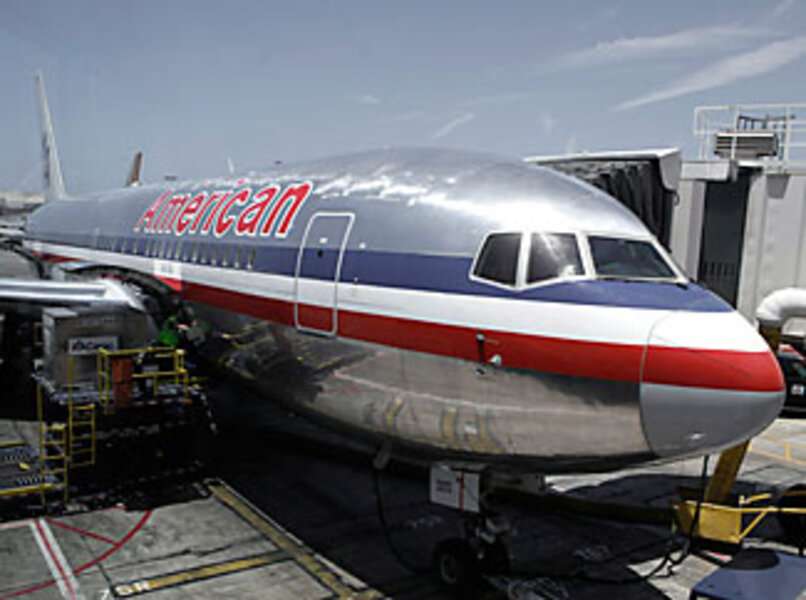American Airlines losses point to grim times for industry
Loading...
| New York
American Airlines on Wednesday reported a $390 million loss during the second quarter of this year. The nation's other major carriers will report on their performance in the coming week, and they are also expected to announce significant losses.
The main reason for the losses is the depth of the current recession, which has prompted companies to forego business travel and many vacationers to stay at or close to home, eschewing air travel altogether.
Like the other major airlines, American Airlines had braced for the economic decline. It had cut capacity significantly in the past year, first in response to spiking oil prices, then in anticipation of the economic downturn. This had led many analysts to say, earlier in the year, that some airlines were likely to break even, if not make a small profit. But then the H1N1 flu virus hit in May and June, contributing to a steep decline in passenger travel.
That resulted in a 23 percent drop in revenue, which was partly responsible for pushing up American's loss to $390 million.
"These are obviously disappointing results," says Gerard Arpey, American Airlines chairman and CEO, in a conference call Wednesday with analysts and reporters. "They reflect the challenges we continue to face on a variety of fronts, from a global economic downturn that is affecting demand for air travel to volatile fuel prices to challenging capital markets."
This is the steepest revenue decline the airline has seen since the two quarters following the 9/11 attacks, he added.
American attributed between $50 million and $80 million of its second quarter loss to the H1N1 flu virus, which significantly affected travel to Mexico. Analysts agree that the US airlines' losses would have been much smaller – perhaps close to break even – without the flu
"The H1N1 virus probably cost the industry a billion dollars of revenue, collectively, in the quarter" says Robert Mann, president of R.W. Mann & Company, aviation consultants in Port Washington, N.Y.
American plans to cut capacity by 7.5 percent in 2009 compared with 2008. It is also paying 58 percent less for fuel than a year ago, which is generating significant savings. And its losses have been tempered by new fees charged for checked baggage.
In a letter to employees, Mr. Arpey voiced optimism about the company's future. "We believe we are taking the right steps," he wrote. "We have a long list of competitive strengths, proven resilience, and despite formidable obstacles, we are executing well on a number of fronts."
Some analysts suggest that American Airlines stock would be a good buy today. Others applaud the company's efforts, but noted that every time the aviation industry appears ready to rebound, some other problem comes along – be it spiking fuel prices, plummeting demand, or a new flu virus.
"We joke ... that we haven't seen the locusts, yet," says Mr. Mann. "The disappointment here is chronic. There have been fleeting moments of 10 percent operating margins in the 1980s and 1990s, but by and large the disappointment outweighs those brief interludes of excitement."





